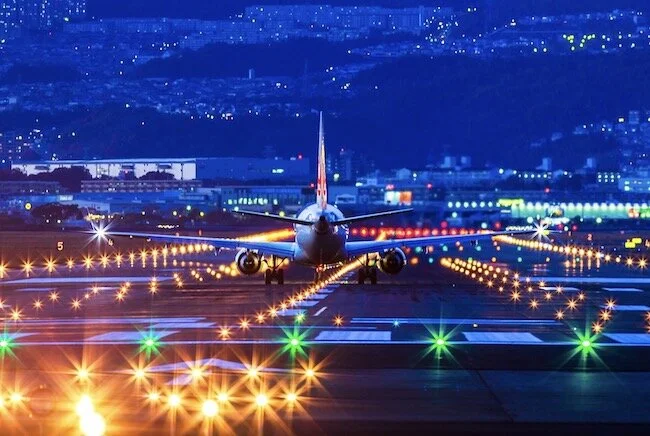Introduction
Airfield lighting plays a critical role in ensuring the safety and efficiency of aircraft operations, especially during night-time and low-visibility conditions. In a developing aviation market like Pakistan, airfield lighting systems are not just a technological necessity—they are a symbol of modernization, progress, and international compliance with aviation standards. From major international airports to smaller domestic airfields, proper lighting infrastructure ensures smooth, safe, and efficient air traffic management.
Power Engineering Industry in Pakistan, including leading companies like Alfazal Engineering, is at the forefront of delivering reliable, durable, and energy-efficient airfield lighting solutions that meet global aviation standards. This article explores the scope, importance, components, and future of airfield lighting systems in Pakistan.
The Importance of Airfield Lighting Systems
Airfield lighting systems are vital for safe airport operations during night hours, poor weather, or fog conditions. These systems provide pilots with clear visual guidance for landing, taxiing, and takeoff. In Pakistan, where climate conditions such as fog, haze, and low visibility frequently affect operations—especially in winter—airfield lighting becomes even more essential.
Without proper lighting infrastructure, the risk of accidents increases, flights are delayed, and operational efficiency is compromised. Therefore, the Civil Aviation Authority (CAA) of Pakistan continuously focuses on upgrading airfield lighting systems in all major and regional airports.
Current State of Airfield Lighting in Pakistan
Over the past decade, Pakistan has made remarkable progress in improving its aviation infrastructure. Major airports such as Jinnah International Airport (Karachi), Allama Iqbal International Airport (Lahore), Islamabad International Airport, and Faisalabad International Airport have undergone extensive upgrades in their airfield lighting systems.
These installations are equipped with modern LED-based airfield lighting, advanced control systems, and energy-efficient power distribution networks. The transition from traditional halogen lamps to LED-based systems has significantly reduced energy consumption and maintenance costs.
However, there is still a need for modernization at smaller domestic airstrips and military airfields, where outdated systems continue to operate. This gap presents opportunities for local engineering industries and manufacturers to contribute toward Pakistan’s aviation growth.
Components of an Airfield Lighting System
A complete airfield lighting system consists of several interconnected components that work together to provide visual guidance to pilots. These include:
1. Runway Lighting
Runway lighting is designed to outline the edges, centerline, thresholds, and end of the runway. It helps pilots identify the landing strip during approach and takeoff.
-
Runway Edge Lights: Mark the boundaries of the runway.
-
Runway Centerline Lights: Provide directional guidance along the runway’s center.
-
Threshold and End Lights: Indicate the usable portion of the runway.
2. Taxiway Lighting
Taxiway lights guide aircraft between runways, terminals, and hangars.
-
Taxiway Edge Lights (Blue): Define the edges of taxiways.
-
Taxiway Centerline Lights (Green): Provide centerline guidance to pilots.
3. Approach Lighting System (ALS)
The ALS helps pilots align their aircraft with the runway during landing approach, especially in low visibility. Systems like CAT I, II, and III are used depending on visibility requirements.
4. Apron and Ramp Lighting
These high-mast floodlights illuminate parking and service areas, helping ground staff handle aircraft safely during night operations.
5. Control and Monitoring Systems
Advanced control panels and computer-based systems allow operators to monitor and adjust lighting intensity based on visibility conditions. They also detect faults in the circuit and ensure uninterrupted operation.
LED Revolution in Airfield Lighting
Traditionally, airfield lighting used halogen or incandescent lamps, which consumed high energy and required frequent maintenance. The global aviation industry, including Pakistan, has rapidly shifted to LED (Light Emitting Diode) technology.
Benefits of LED Airfield Lighting:
-
Energy Efficiency: LEDs consume 50–80% less power.
-
Longer Lifespan: LEDs last up to 50,000 hours or more.
-
Low Maintenance: Reduced need for frequent replacements.
-
Uniform Illumination: Provides consistent brightness and better visibility.
-
Eco-Friendly: Lower carbon footprint and reduced heat emission.
Companies like Alfazal Engineering and other power engineering firms in Pakistan are now focusing on manufacturing and supplying LED-based airfield lighting systems that meet ICAO (International Civil Aviation Organization) standards.
Airfield Lighting Standards and Regulations
To ensure operational safety and global compliance, all airfield lighting systems must adhere to strict standards such as:
-
ICAO Annex 14 – Aerodromes
-
FAA (Federal Aviation Administration) Regulations
-
CAA Pakistan Guidelines
These standards define color codes, light intensity, spacing, and installation requirements. The Power Engineering Industry in Pakistan works closely with the Civil Aviation Authority to ensure that all installations are compliant and certified.
Challenges Faced in Pakistan’s Airfield Lighting Sector
While progress has been substantial, several challenges still exist:
1. Aging Infrastructure
Some regional airports in Pakistan still rely on outdated lighting systems installed decades ago, which require frequent maintenance and offer poor energy efficiency.
2. Power Supply Issues
Inconsistent power supply can cause operational challenges. Backup systems and uninterrupted power solutions are essential for airfield operations.
3. High Installation Cost
Modern airfield lighting systems involve high initial investment, which can be challenging for small airports or provincial governments.
4. Lack of Technical Expertise
There is a shortage of locally trained technicians specialized in advanced lighting systems, leading to dependency on foreign experts for installation and maintenance.
Role of Power Engineering Industry in Pakistan
The Power Engineering Industry of Pakistan, including Alfazal Engineering, has played a major role in transforming the country’s aviation infrastructure. From manufacturing lighting poles, control panels, and galvanized structures to supplying LED fittings and electrical accessories, the industry supports every step of the installation process.
Key services offered include:
-
Design and Engineering Consultation
-
Manufacturing of Lighting Structures and Poles
-
Supply and Installation of LED Fixtures
-
Electrical and Control Systems Integration
-
Testing, Maintenance, and Calibration
By focusing on local production and quality assurance, Pakistan’s power engineering companies reduce dependency on imports and create cost-effective, reliable solutions for domestic airports.
Airfield Lighting Installation Process
The installation of airfield lighting requires technical precision and adherence to safety standards. The general process includes:
-
Site Survey and Design
Engineers evaluate the airfield layout, visibility range, and operational requirements to design a customized lighting plan. -
Foundation and Cable Work
Trenches and conduits are prepared for cable laying, ensuring proper grounding and insulation. -
Fixture Installation
Lighting fixtures such as inset lights, elevated lights, and approach lights are mounted and aligned accurately. -
Power and Control System Integration
Control panels, CCRs (Constant Current Regulators), and transformers are installed to ensure proper power distribution. -
Testing and Commissioning
Each circuit is tested for light intensity, alignment, and functionality before the system goes live. -
Maintenance and Inspection
Regular inspections and cleaning ensure the system remains reliable and efficient over time.
Technological Innovations in Airfield Lighting
Pakistan is gradually embracing smart airfield lighting systems integrated with IoT (Internet of Things) and automation technologies. Modern airports are adopting:
-
Remote monitoring and control systems
-
Solar-powered airfield lighting solutions
-
Automatic intensity adjustment based on visibility
-
Wireless communication between lights and control towers
Such innovations significantly improve operational efficiency and reduce energy consumption, aligning Pakistan with international aviation advancements.
Economic and Environmental Impact
The shift to LED and solar-powered systems has not only improved safety but also brought economic and environmental benefits:
-
Reduced energy bills for airports
-
Lower carbon emissions
-
Less frequent maintenance, saving operational costs
-
Compliance with global sustainability goals
With Pakistan moving toward green energy, the aviation industry is becoming a part of the sustainable infrastructure revolution.
Future of Airfield Lighting in Pakistan
The future of airfield lighting in Pakistan looks bright and promising. With the increasing demand for safe, efficient, and sustainable airports, both government and private sectors are investing heavily in modernization.
Expected Developments:
-
Upgrading all domestic airports to LED systems
-
Expanding regional connectivity with new airstrips
-
Implementing solar-powered and hybrid lighting systems
-
Establishing local manufacturing plants for lighting equipment
-
Training programs for technicians and engineers
The Power Engineering Industry, led by innovators like Alfazal Engineering, will continue to drive this transformation through advanced engineering, quality manufacturing, and reliable service delivery.
Why Choose Alfazal Engineering for Airfield Lighting Projects
Alfazal Engineering is a trusted name in Pakistan’s power and industrial engineering sector. The company offers end-to-end solutions for airfield lighting projects with a commitment to quality, precision, and innovation.
Key Strengths:
-
Expertise in design, fabrication, and installation
-
High-quality galvanized poles and mounting structures
-
Use of ICAO-compliant LED lighting systems
-
Skilled engineering and technical staff
-
Timely project completion and nationwide service
-
Strong focus on safety and reliability
Whether it’s a large international airport or a small regional airstrip, Alfazal Engineering ensures optimal performance, durability, and long-term efficiency.
Conclusion: Lighting the Way Forward
Airfield lighting is not merely an infrastructure element—it is the lifeline of safe aviation operations. In Pakistan, as air traffic continues to grow and modernization expands, the importance of efficient, sustainable, and technologically advanced lighting systems cannot be overstated.
Through the combined efforts of the Civil Aviation Authority, Power Engineering Industry, and companies like Alfazal Engineering, Pakistan is well on its way to achieving world-class aviation infrastructure that meets global safety and performance standards.
Together, we are lighting the skies—powering the future of Pakistan’s aviation industry.


